Members of the Society recently enjoyed a visit to the remains of North Leigh villa which sits in a sunny, sheltered spot on the banks of the river Evenlode.
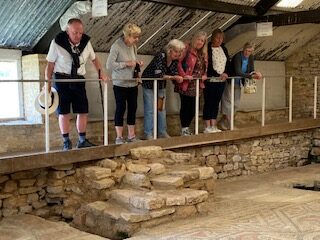
The Villa Layout
At its maximum extent in the early 4th century, a great ‘courtyard villa’ stood on the site with a range of buildings on each of three sides of a rectangle, with a corridor and a gatehouse closing the courtyard on the fourth side. This created a large, enclosed open space which may have been laid out as a garden. This villa was provided with three bath suites, 16 of its rooms had mosaic floors and 11 were provided with under-floor heating.
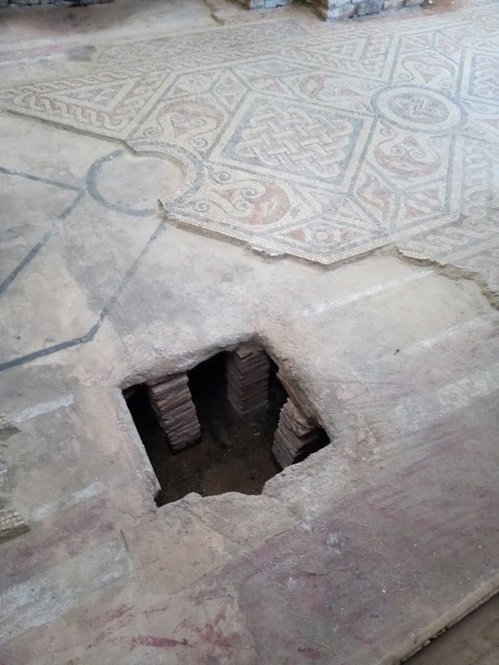
Today little remains of this once vast residence with only the foundations of the north and west ranges, including the bath complex, being exposed. The remains of the rest of the villa are buried to protect it from destruction by the elements.
The Mosaics
Local volunteers (the site is in the care of English Heritage but has not had a custodian present for many years), met us on site and opened the ‘mosaic shed’ so we could see the one remaining early 4th century mosaic.
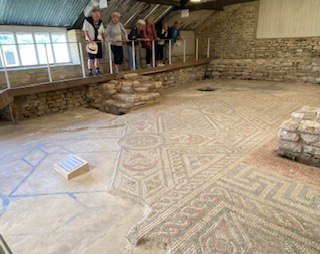
Although damaged over time the mosaic, made by mosaicists from a workshop in Cirencester, still looks impressive. We were also shown copies of detailed drawings of other elaborate mosaics made when the site was excavated in the early 19th century, which were subsequently removed by souvenir hunters.
The volunteers explained that the villa had its origins in the pre-Roman Iron Age with the first stone structures replacing earlier earth and timber buildings in the 1st or early 2nd century AD.
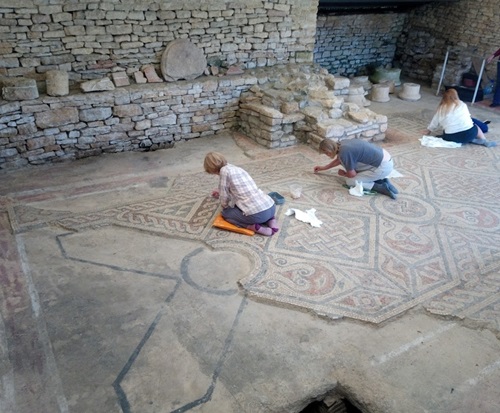
North Leigh Villa Developments over Time
It is assumed that the same, probably extended, family continued to live here after the arrival of the Romans. Its likely they benefitted from increased trade and improvements in transport, trade and farming methods that came with Roman rule. As their fortunes improved so did their accommodation, with the addition of ‘home improvements’ including a bath house and the gradual expansion of accommodation for themselves, their guests and servants.
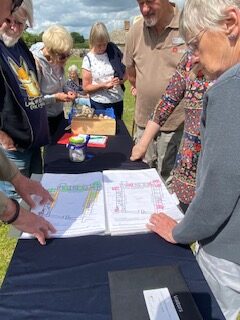
Aerial photographs and geophysical survey have revealed that there were further, extensive buildings beyond the south-west range which may have formed a home farm for the villa. A system of ditched fields surrounded the villa. The villa probably declined and was abandoned in the 5th century AD, following the withdrawal of Roman troops from Britain and the consequential breakdown of central administration in the province.
Ongoing Care of the Villa
It was good to hear that after many years of neglect English Heritage are now working with local volunteers to make the site more accessible and are implementing a conservation plan that includes the installation of a new roof on the old mosaic ‘shed’, repairs to the old custodian’s cottage, and the conservation of the ruins themselves.
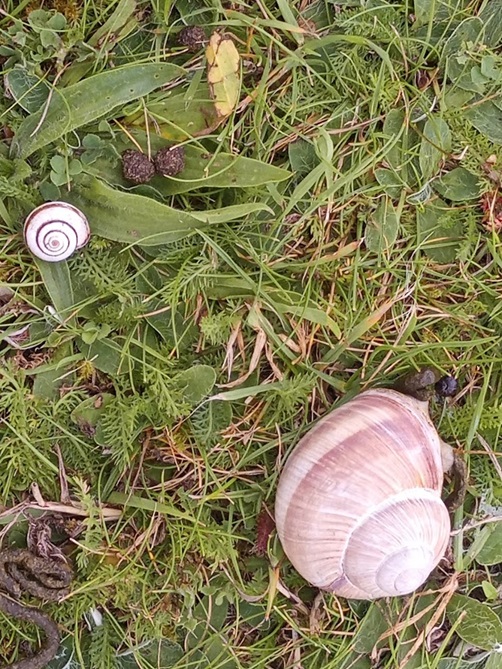
Before leaving we were introduced, via their empty shells, to some of the edible (at least in the Roman period) snails first introduced by the Romans. These snails have never felt the need to stray far from this perfect spot where they were originally bred, and can still be seen around the villa today.
North Leigh Villa Audio Tour
Sadly, unlike the snails, the volunteers aren’t always there, but they have created an audio tour which you can use to guide yourself around the site. It can be found here and downloaded free to your phone.

